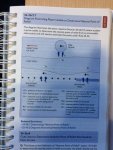Troymcclure
Medal Winner
Am I correct in thinking that "full" relief i.e. feet can't still be on the path is accounted for twice? i.e. both when determining the Reference Point AND when assessing the Relief Area? e.g. reference point taking "full" relief is in the middle of a bush but one angled club length back towards the path lets me drop on grass but with feet on the path. Not permissible right?

